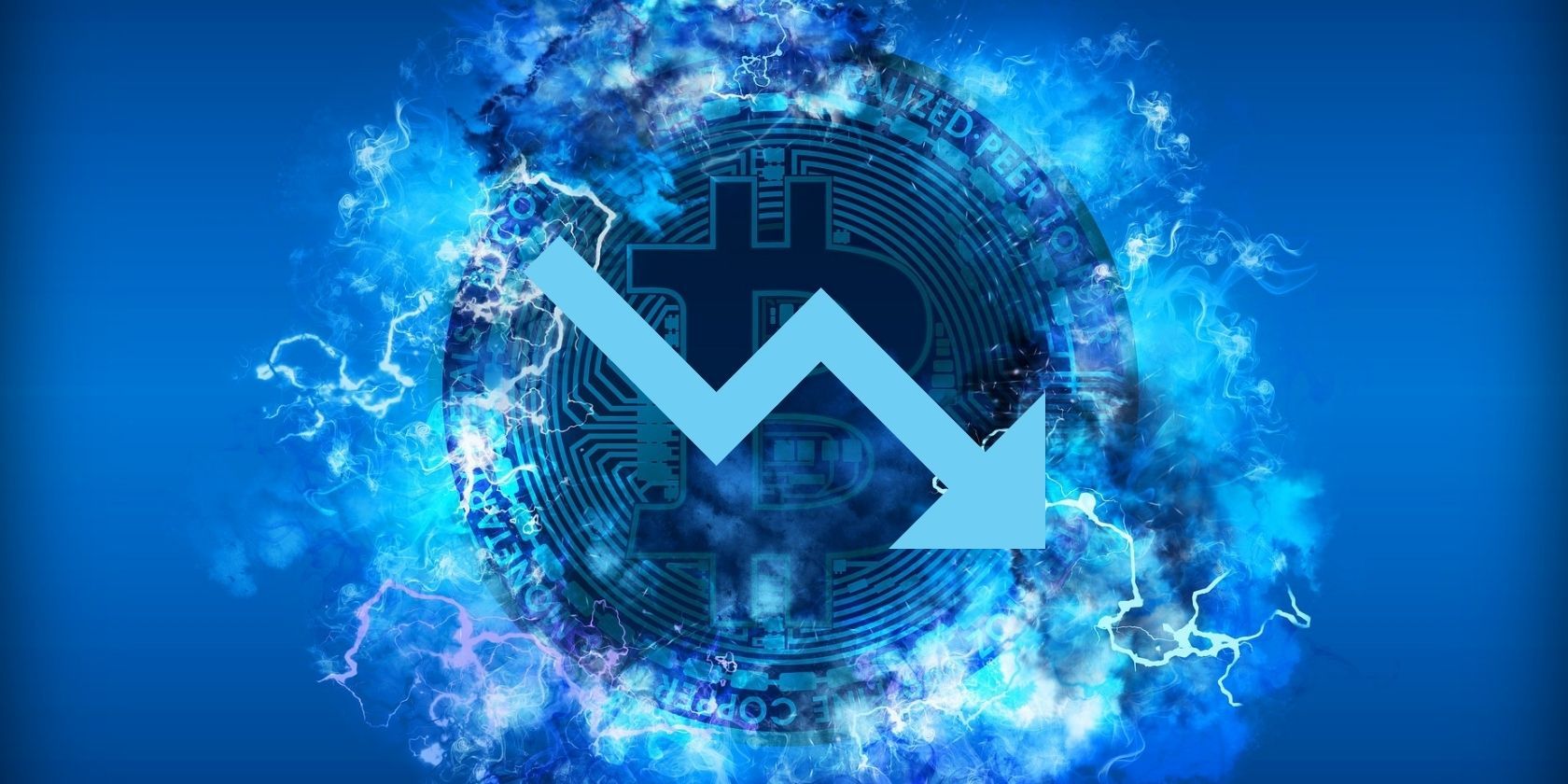
As the cryptocurrency industry has grown exponentially over the past few years, it has been infiltrated by cybercriminals looking to capitalize on victims within this booming market. One of the most notorious crypto crimes being used today is the rug pull.
Such scams have resulted in the loss of millions and millions of dollars, but how do they work, and how can you avoid falling for one?
What Is a Crypto Rug Pull Scam?
Because the price of a cryptocurrency can shoot up to many times its original value in a matter of hours, many try the get-rich-quick approach when they invest. Much of the crypto trading industry centers around buying low and selling high, so it’s no surprise that many traders flock towards coins or tokens that have a lot of promise. It’s this hopefulness, or vulnerability, that cybercriminals take advantage of when carrying out rug pull scams.
A crypto rug pull scam (the name of which refers to having the rug unexpectedly pulled from under you) involves launching a token, attracting investment, and then pulling the plug. You may have heard of a rug pull scam before, as they’re pretty commonplace in the traditional finance world, too. But the lack of regulation surrounding cryptocurrency makes rug pull scams even easier to pull off, which is why they’re now worryingly numerous in the crypto market.
Crypto rug pull scams often involve tokens rather than coins. This is because tokens can be built on a pre-existing blockchain, like Ethereum or Zilliqa. Because these popular blockchains have a native cryptocurrency that has value, users can buy tokens from a project using the native currency. Let’s create our own example of a pump and dump rug pull to better understand why this is useful to cybercriminals.
An Example of the Crypro Rug Pull Scam
Say a new project named BonsaiDAO was launched on the Binance Smart Chain. Binance Smart Chain’s native coin, Binance Coin (BNB), can be used to buy the native token of BonsaiDAO, which we’ll call BONS. Let’s say an investor bought 5,000 BONS for 1 BNB (which equates to around $300 currently).
Because the investor has paid the project in BNB, the scammer can quickly liquidate this BNB into cash or send it to another wallet for further use. So, in a rug pull scam, the criminal takes the investor’s $300 worth of BNB, along with all other investments made in the form of BNB, and hits the road.
But why would anyone invest in a new coin that hasn’t proven itself to have any long-term value?
Pumping The Rug Pull
Marketing plays a huge role in rug pulls. Scammers market and promote their rug pull tokens heavily to create a buzz around their project. This is often done through social media (particularly Twitter), where a polished and professional image of the project can be feigned. Scammers will also often launch an Initial DEX Offering (IDO) to raise capital on a decentralized exchange. This is essentially just the launch of a set amount of tokens onto an exchange so that they can be traded.
As the hype grows, so do the investments. People see the project’s social media accounts, notice an uptick in the trade of a crypto, or hear from other investors that there’s a new hot crypto on the market, and decide to make their own investment in the hopes that the crypto will gain significant value. Once the project has enough financial backing, everything comes crashing down.
When cybercriminals launch a rug pull token, they keep a large amount of the supply for themselves. Consider the BonsaiDAO example again. If 1,000,000 BONS are launched in the IDO, the scammers decide to keep 75 percent of the BONS to themselves. Why? Because as investor numbers grow, the value of BONS increases, and the scammers have more money in their back pocket in the form of BONS.
So, let’s say BONS has reached a value of $20 per BONS token in the space of a few weeks. If the scammers have kept 75 percent of the circulating supply, they now have $15 million in BONS to themselves. In light of this hefty price increase, the scammers sell all of their BONS back to the decentralized exchange, making a huge profit in doing so.
Because 75 percent of the total supply has now been sold back, demand plummets, and so does the price. This means that investors who put their faith and money into BonsaiDAO are now left with nothing.
This is how a rug pull scam can often play out, but there are two other kinds of rug pulls: liquidity theft and limiting sell orders.
What Is Liquidity Theft?
Liquidity theft rug pulls are also very common in the crypto industry. In liquidity theft rug pulls, scammers list their new token and pair it with a well-known cryptocurrency, such as Ethereum. Cryptos can be paired in this way in liquidity pools, a popular tool used by investors to make a profit. The amount of each crypto in these pools can be altered based on value, demand, etc.
When a scammer creates a pool wherein their scam token is paired with a valuable asset, and more individuals invest in that pool, their scam token will rise in value. To even things out, more of the well-established token will be added to the pool and some of the scam token will be removed. Once the token has become valuable enough, and there is enough of the other crypto in the pool, scammers will withdraw all the latter from the pool.
What Does Limiting Sell Orders Involve?
Scammers can also design their token’s code in a way that only permits a limited amount of them to be sold on a decentralized exchange. This means that investors invest in a coin without realizing that they won’t be able to trade it. When the scammer has made enough money through investments, they sell their portion of the tokens back to the exchange and make a profit.
Many rug pull scams have taken place in the crypto industry so far, with some managing to steal millions from investors. Consider the Squid Game crypto rug pull, for example (a limiting sell order scam). This crypto went from being worth a fraction of a dollar to over $90 in the space of a few days. The scammers here capitalized from the hype surrounding Squid Game, Netflix’s hugely popular South Korean show. As soon as SQUID hit its highest price, the developers pulled the plug, stealing over $3.3 million from investors.
But if so many people have fallen for these rug pulls, can they really be avoided?
How to Detect and Avoid Rug Pull Scams
The first thing to look out for when you consider investing in a cryptocurrency is its age. Was it only created a few days or weeks ago? If so, it’s definitely a flight risk. Without seeing a crypto’s long-term value, you simply don’t know whether its creators have illicit intentions.
Secondly, if a crypto’s price has shot up exponentially shortly after its launch, it could be an indicator of a rug pull scam. Scammers often aren’t looking to wait months or years to make a profit, and will try to boost their token’s price as quickly as possible. So be on the lookout for this.
You should also check whether the developers of a project are anonymous or not before you invest. Scammers will always remain anonymous, for obvious reasons, so it’s worth considering this when researching an asset. However, some big, legitimate projects have anonymous creators too. Even Bitcoin’s creator is unknown. But the identity or background of developers can be very telling.
Check out the social media accounts and other sources surrounding a token’s developer(s) to see how well-established they are.
You should also consider the distribution of a token before investing. Remember that rug pull scammers will often keep a large portion of their token for dumping. This can be one of the clearest signs of an imminent rug pull.
You can also take a look at lists of scam tokens, which you can find via a simple browser search, to see if your chosen token is on the blacklist.
Rug Pull Scams Are Prevalent in the Crypto Industry
Crypto rug pull scams can cause huge financial devastation, and have left lasting marks in the crypto industry. These scams can be so sophisticated that even an experienced trader can be fooled, and the ease with which they can be pulled off is truly worrying. This is why it’s crucial that you stay vigilant and remain aware of the key signs of a possible rug pull scam.
This news is republished from another source. You can check the original article here




